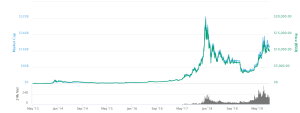Technological Advancements Shaping the Crypto Landscape
Navigate the thrilling, volatile world of cryptocurrency. Learn about the tech, the risks, and the potential rewards before diving in. Master the market – or be mastered by it!
The cryptocurrency market is a fascinating and often bewildering landscape․ Its volatility is legendary, capable of producing both astronomical gains and devastating losses in remarkably short periods․ Understanding the forces that shape this dynamic environment is crucial for anyone considering involvement, whether as an investor, developer, or simply a curious observer․ This requires a nuanced understanding of technological advancements, regulatory shifts, macroeconomic factors, and the ever-changing psychology of the market itself․ Navigating this complexity requires careful analysis and a long-term perspective․
Technological innovation is the lifeblood of the cryptocurrency market․ New blockchain protocols, improved scalability solutions, and the emergence of decentralized finance (DeFi) applications constantly reshape the competitive landscape․ The development of layer-2 scaling solutions, for example, addresses the limitations of older blockchain networks, allowing for faster and cheaper transactions․ This directly impacts the usability and appeal of various cryptocurrencies, influencing their market capitalization and adoption rates․ The rise of smart contracts has also revolutionized the possibilities within the crypto space, enabling the creation of decentralized applications (dApps) with a wide range of functionalities․
The Impact of Layer-2 Scaling Solutions
Layer-2 scaling solutions are crucial for the long-term viability of many cryptocurrencies․ By processing transactions off-chain, they significantly reduce congestion and transaction fees, making the networks more efficient and accessible to a wider user base․ This increased efficiency can lead to greater adoption and, consequently, a positive impact on the price of the associated cryptocurrency․ Examples include Lightning Network for Bitcoin and Polygon for Ethereum․ The competition between different layer-2 solutions is also a factor influencing market trends, as each seeks to establish itself as the dominant solution․
The Rise of Decentralized Finance (DeFi)
Decentralized finance (DeFi) has emerged as a significant force within the crypto market․ By leveraging blockchain technology, DeFi protocols offer a range of financial services, such as lending, borrowing, and trading, without the need for intermediaries like banks․ This disintermediation has attracted a large and growing user base, driving demand for various cryptocurrencies used within the DeFi ecosystem․ The innovation in DeFi is relentless, with new protocols and applications constantly emerging, creating both opportunities and risks for investors․
Regulatory Scrutiny and its Influence
Government regulations play a significant role in shaping the crypto market․ Different jurisdictions adopt varying approaches, ranging from outright bans to more permissive regulatory frameworks․ Regulatory clarity is crucial for fostering investor confidence and promoting responsible innovation․ However, the lack of a globally harmonized regulatory approach creates uncertainty and potential challenges for the industry․ The evolving regulatory landscape necessitates constant monitoring and adaptation by market participants․
The Impact of Varying Regulatory Approaches
The diverse regulatory landscape across different countries presents both opportunities and challenges․ Some jurisdictions might offer more favorable regulatory environments, attracting investment and innovation․ Conversely, stricter regulations can hinder growth and potentially drive activity to less regulated regions․ This creates a dynamic interplay between regulatory pressures and market behavior, influencing the flow of capital and the development of the crypto ecosystem․ Understanding the specific regulatory environment of different markets is therefore crucial for informed decision-making․
Navigating the Regulatory Uncertainty
The lack of global regulatory harmonization creates significant uncertainty for market participants․ Companies operating in the crypto space need to adapt to constantly evolving regulations in different jurisdictions․ This necessitates a deep understanding of legal and compliance issues and the ability to navigate complex regulatory landscapes․ The ongoing evolution of regulatory frameworks requires continuous monitoring and proactive adaptation to minimize risks and capitalize on opportunities․
Macroeconomic Factors and their Influence
Macroeconomic factors, such as inflation, interest rates, and overall economic growth, significantly influence the cryptocurrency market․ Cryptocurrencies are often viewed as an alternative asset class, and their prices can be influenced by broader market sentiment and investor risk appetite․ During periods of economic uncertainty, investors may seek refuge in assets perceived as safe havens, potentially leading to a decline in cryptocurrency prices․ Conversely, periods of high inflation can drive demand for cryptocurrencies as a hedge against inflation․
- Inflation: High inflation can push investors toward cryptocurrencies as a hedge against currency devaluation;
- Interest Rates: Rising interest rates can reduce the attractiveness of riskier assets like cryptocurrencies․
- Economic Growth: Strong economic growth can boost investor confidence and lead to increased investment in cryptocurrencies․
- Geopolitical Events: Global events can create uncertainty and impact investor sentiment towards cryptocurrencies․
The Correlation (or Lack Thereof) with Traditional Markets
The relationship between cryptocurrency prices and traditional financial markets is complex and not always straightforward․ While some correlations exist, particularly during periods of significant market volatility, the cryptocurrency market often exhibits independent movements driven by its unique characteristics and dynamics․ Analyzing the interplay between these markets requires a sophisticated understanding of both traditional financial instruments and the specific factors driving the crypto market․
The Impact of Global Economic Events
Major global events, such as wars, political instability, or natural disasters, can significantly influence cryptocurrency prices․ These events often create uncertainty and risk aversion in the broader financial markets, impacting investor sentiment towards cryptocurrencies; The crypto market’s decentralized and global nature makes it susceptible to the ripple effects of global events, making it crucial to monitor geopolitical developments closely․
Market Sentiment and Psychological Factors
Market sentiment plays a crucial role in shaping cryptocurrency prices․ News events, social media trends, and influencer opinions can all influence investor behavior and create price fluctuations․ Understanding the psychology of the market, including factors like fear, greed, and herd mentality, is essential for navigating the volatility․ These psychological elements can often amplify short-term price swings, creating opportunities for both gains and losses․
- Fear of Missing Out (FOMO): This psychological phenomenon can drive rapid price increases as investors rush to join a perceived winning trade․
- Fear, Uncertainty, and Doubt (FUD): Negative news or rumors can spread quickly, triggering sell-offs and price declines․
- Herd Mentality: Investors often follow the actions of others, leading to amplified price movements in both directions․
- Social Media Influence: Social media platforms can be powerful drivers of market sentiment, with influential figures shaping public opinion․
The Role of Social Media and News
Social media platforms have become a significant source of information and influence in the cryptocurrency market․ News articles, social media posts, and influencer commentary can rapidly spread, shaping market sentiment and driving price volatility․ It is crucial to critically evaluate information from these sources and avoid being swayed by hype or misinformation․ The speed and reach of social media can magnify both positive and negative news, leading to amplified price reactions․
Analyzing Market Sentiment Indicators
Various indicators can be used to gauge market sentiment, such as social media sentiment analysis, trading volume, and the volatility of price movements․ By analyzing these indicators, investors can gain insights into the prevailing market mood and make more informed investment decisions․ However, it is crucial to remember that market sentiment is inherently subjective and unpredictable, making it only one piece of the puzzle in effective market analysis;







